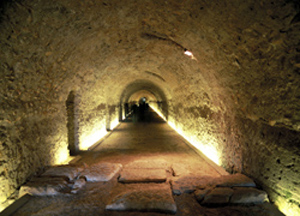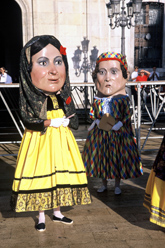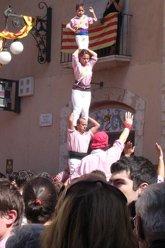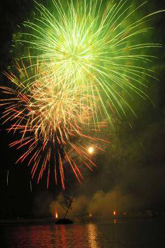|
About Tarragona
HISTORY
Although the region was already populated by the 5th century B.C., Tarraco was established after Roman armies had arrived in the Iberian Peninsula in 218 BC, during the struggle between the Romans and the Carthaginians for controlling the Mediterranean, which was called the Second Punic War. The Roman expeditionary force landed at the Greek city of Emporion from where it rapidly marched south to take the lands north of the River Ebre. The troops were under the command of Cnaeus Cornelius Scipio, who defeated the Carthaginians in their first battle, and the Roman military base that they had established, became the main Roman military base in Hispania and, later, the city of Tarraco. In the 2nd century B.C. the city itself was established through the construction of its wall and the planning of its roads.
It became increasingly important over the 2nd and 1st centuries B.C. with the arrival of new settlers. Julius Caesar granted it the title of the colony most likely in 45 B.C. From 26 to 25 B.C. the emperor Augustus made the city its home, using it to oversee the fight against the Cantabrians and Asturians and, for the first time, to rule the empire from outside Rome. During those years Tarraco was the capital of the Roman Empire. In this period the city underwent several additional transformations, including the refurbishment of its road system, the construction of its theatre and the building of its altar, as recorded in several classical sources.
Over the 1st and 2nd centuries A.D., Tarraco, as capital of the empire's largest province, Hispania Citerior, which spanned over half the Iberian Peninsula, became a major hub and underwent its period of greatest urban growth. The city was filled with monuments, the forum was enlarged and the thermae, or public baths, and amphitheatre were built. Likewise, the magnificent architectural complex consisting of the provincial forum and circus was built on the acropolis.

 
ARTS AND CULTURE
Tarragona has a population of 130,000 inhabitants, and the native tongue is Catalan. The official languages in Tarragona are Catalan and Spanish.
Tarragona is a city with thousands of years of history. Ancient Tarraco, founded by the Romans, was one of the most important cities on the Mediterranean. This impressive Roman legacy, a symbol of modern day Tarragona, has been declared a World Heritage Site by UNESCO. But Tarragona is more than just Roman monuments; it also has a vibrant medieval history, modernists buildings, white sand beaches, crystal clear waters, a picturesque fishing and marina neighborhood, protected forest and nature areas, traditions and popular culture…
Tarragona offers a wide variety of traditional festivals to its visitors, such as its carnivals. During the two weeks prior to Easter the International Dixieland Festival is celebrated, it is currently the only one of this type in Spain. Tradition and spirituality coexist at Easter in Tarragona, being the most time-honoured in Spanish Mediterranean, with its "Sant Enterrament" procession taking place in the afternoon on Good Friday. It was originated in 1550 and has been declared Traditional Festival of National Interest by the Generalitat de Catalunya.
During the entire first week of July the International Fireworks Competition is held. August 19th is Sant Magí, the city's patron saint, which serves as a preparation for the grand festival of Santa Tecla, the big festivity of the city. This Patron Saint Festival is commemorated on September 23rd in honor of the city's female patron saint, Santa Tecla, originally from 1370.
To discover the beauties of Tarragona, you can visit the link
FESTIVITIES OF SANTA TECLA
The festivities of Santa Tecla are the set of activities carried out during the month of September in Tarragona celebrating the city's patron saint. This festival was declared a Traditional Festival of National Interest by the Generalitat de Catalunya and Festival of National State and Tourist Interest by the Spanish Government. Over ten days Santa Tecla fills the city with an explosion of happiness, music, color and tradition. All the traditional elements participate in the Popular Procession, including the richest combination of dances conserved within Catalonia. The Human Towers make Tarragon's hearts race, the Descent of the Eagle is waited hopefully by all the citizens, concerts flood Tarragona and many other events can be enjoyed by everybody.
  
The schedule of the Festivities will be posted on the website when available.
|
|

